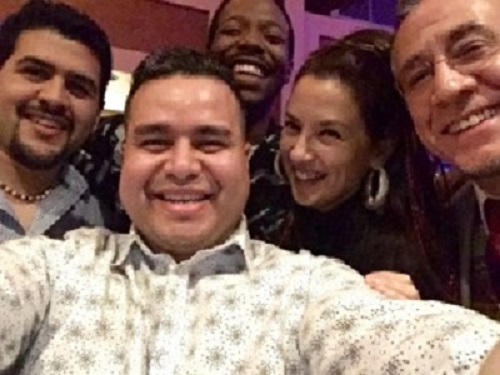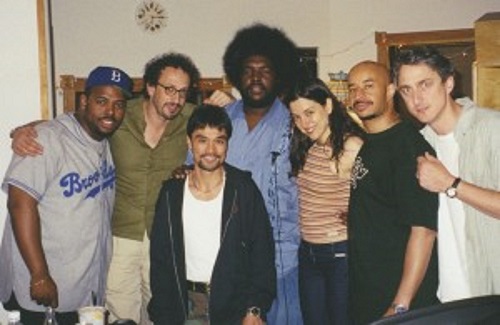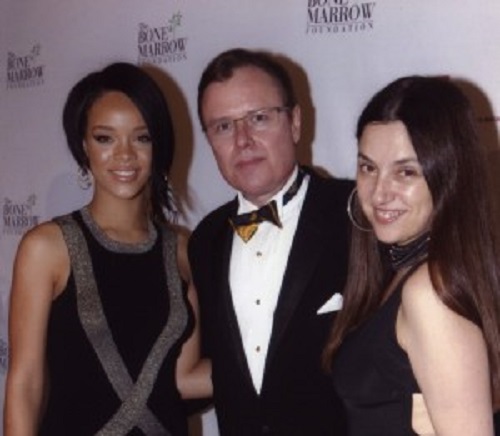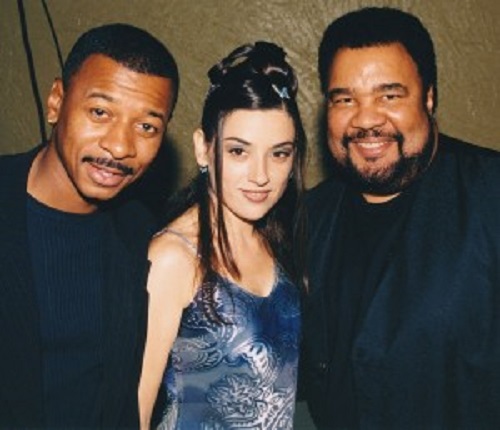Much prominence is given to singers, musicians and the visible part of the entertainment in general, but there is not enough talk of those who make it possible for the aforementioned to record what they have created for their audience. That is why we wanted to talk to Jennifer Freedman, better known as ”La Chiqui Some” and Agustin Someillan, who is known as ”El Some”.

Singer Jennifer Freedman and trumpeter Agustin Someillan in the studio
Jennifer and Agustin ‘’El Some’’’s first contact with music
Jennifer started in music with percussion in 2005, but moved away from it for a few years to pursue other activities until other artists and groups called her to play with them. She was then invited to attend some rehearsals at Mam-Ax Studios, where by a twist of fate, there was a man named Someillan who already had a studio at that time. They still did not know each other at that time, but soon, one would be very important for the other’s professional life.
In 2018, she had to go again to the same building, which is when she finally met Agustin, who tells her that she was in the wrong place and had to go to another office. Her visit to Mam-Ax was intended to participate in the recording of a single for singer Freddy Nieves, but that chance encounter would help her to learn that both she and Agustín had a partner in common, who recommended her to work together.
After that, both accepted and began to know each other better, which led ”El Some” to advise Jennifer on her singing and other details of the business. At the same time, the girl was beginning to see music as something much more serious, since it was only a hobby for her by then. She had certain doubts because she had not jumped right into music professionally, but Agustín convinced her to try to start a career as such, to which she ended up giving in.
The owner of the studio did not have the support of anyone at that time, so he had the great idea of partnering with Jennifer and bringing together their qualities in the same project.
In the case of ”El Some”, he comes from a musical family and studied music in Cuba. He became a trumpet player just like his father. Back in his country of origin, he was fortunate to accompany many orchestras such as the Sexteto Nacional de Ignacio Piñeiro, with which he was nominated for Latin Grammy in 2014.
Having decided his country did not provide him with all the opportunities he needed as an artist at that time, he tried his luck in New Jersey, where he currently resides as does Jennifer, with whom he currently shares the Sonority Record Studios project.
At this moment, they are creating the album ”Los Some Son” as an idea of Jennifer herself to get people know ”El Some”’s career. Among the guests of the project, we can mention former Los Van Van singer Pedrito Calvo, former Los Van Van singer Melly Cartero, Jennifer herself, singer Frankie Vazquez, pianist Arturo Ortiz, among many others.

How Jennifer and ”El Some” created Sonority Music Studios
Agustin has been in the studio for almost 12 years, while Jennifer has only been there for five, but that has not stopped them from getting together perfectly, of course. He has always liked to play the trumpet, but his neighbors started to complain about the constant noise coming from his house, so he decided to look for a place to make music without disturbing anyone.
However, before that, he was already working on music at home, to the point that he produced an album for José Mangual from his own home, which he describes as ”a huge odyssey”, since he did not have the conditions to complete a job of that magnitude. That is when he decides to look for a space more conditioned to record and produce, so he acquires half of the space he currently uses and elongated it after partnering with Jennifer.
There were implements they did not possess the knowledge to use, but little by little, they were learning on their to create the brand they have today and the prestige that they acquired in the Latin music community with so much sacrifice.
”Although this is not a big studio, great things have happened here. There is a great vibe and we make very good music” said ”El Some” about what has been achieved with this space, which has become their musical home.
The studio has a vacuum-sealing cabin and everything necessary for mixing, mastering, editing, recording and much more.

Relationship between Los Some Son and Sonority Music Studios
At the moment of expanding the studio, Agustin had already named the place ”Some Son”, but once he and Jennifer became partners, they started to think about how to market it more effectively in the United States. Since everything they did there had to do with sonority, they opted for something with that word, so the studio ended up being called Sonority Music Studios.
Both are listed as company managers and ”El Some” focuses on the music, creation, engineering and production side. On the other hand, Jennifer is much more focused on the administrative part, contracts, bookings, among other details of this type.
Seeing what they were achieving with the studio, they felt they could expand a little more to other facets, so both artists also engaged in founding their own band that they called ”Los Some Son” in homage to the ”El Some”’s family of trumpeters and Cuban salsa music in general.
In conclusion, both the studio and the band are formed by the same team, so both projects go hand in hand.

































